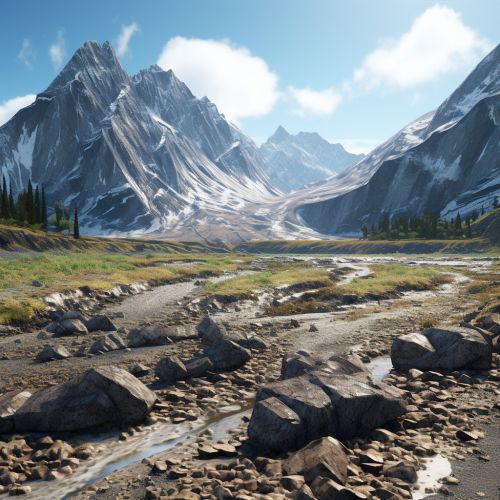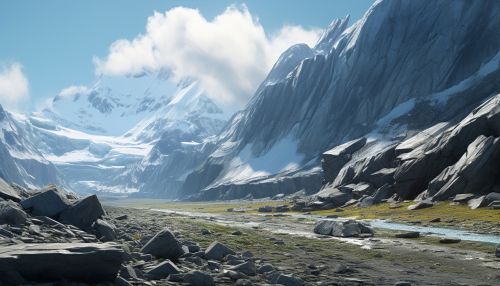Lateral moraines
Definition and Formation
A lateral moraine is a type of moraine that forms along the sides of a glacier. They are the result of rock and soil debris accumulating on the sides of the glacier as it moves, creating a ridge-like structure. Lateral moraines are a key feature in glacial landscapes and provide important clues about past glacial activity and environmental conditions.
The formation of lateral moraines begins with the process of weathering and erosion. As a glacier moves down a valley, it erodes the valley sides, dislodging rocks and soil. This material is then incorporated into the ice at the glacier's edge. Over time, this accumulation of debris forms a ridge along the sides of the glacier, creating a lateral moraine.


Characteristics
Lateral moraines are characterized by their location along the sides of a glacier and their ridge-like structure. They can vary greatly in size, depending on the size of the glacier and the amount of debris accumulated. Some lateral moraines can be several meters high and extend for many kilometers along the length of a glacier.
The composition of a lateral moraine is primarily rock and soil debris, with the specific types of rock and soil depending on the local geology. In addition to rocks and soil, lateral moraines can also contain organic material, such as plant remains, which can provide valuable information about past environmental conditions.
Types of Lateral Moraines
There are two main types of lateral moraines: active and inactive.
Active lateral moraines are associated with currently flowing glaciers. They are continually being added to as the glacier erodes the valley sides and incorporates the debris into the ice at its edge.
Inactive lateral moraines, also known as relict lateral moraines, are associated with glaciers that have retreated or disappeared. These moraines are no longer being added to and instead are being eroded and modified by weathering and other post-glacial processes.
Importance in Glacial Studies
Lateral moraines are important features in the study of glaciology and Quaternary science. They provide valuable information about past glacial activity, including the extent and direction of glacier movement, the rate of glacial erosion, and the environmental conditions at the time of moraine formation.
By studying the characteristics of lateral moraines, such as their size, shape, and composition, scientists can infer details about the glacier that formed them. For example, a large, high lateral moraine suggests a large, powerful glacier, while the types of rock and soil in the moraine can indicate the geology of the area the glacier moved through.
Lateral moraines can also provide information about past climate conditions. The presence of organic material in a moraine, such as plant remains, can indicate the type of vegetation that was present when the moraine was formed, which in turn can provide clues about the climate at that time.
